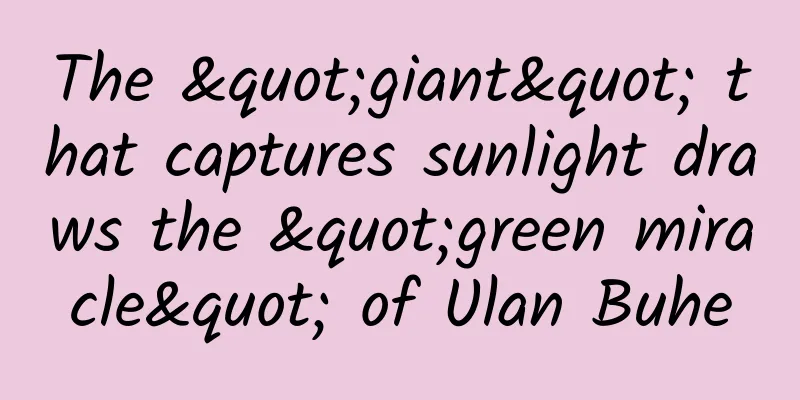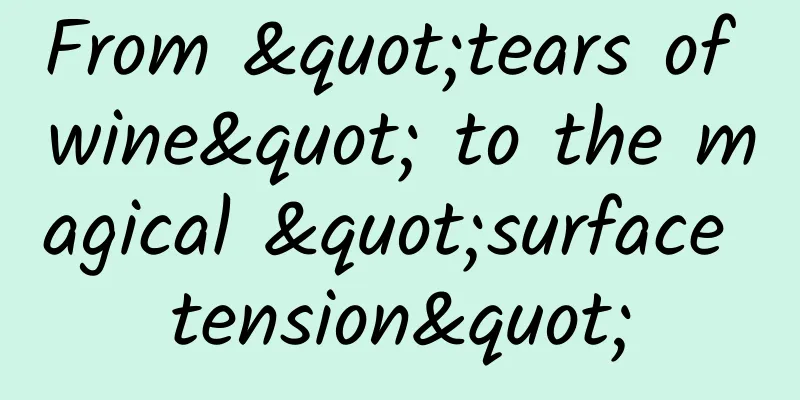The "giant" that captures sunlight draws the "green miracle" of Ulan Buhe

|
In the vast national territory, desert control and ecological construction are not only a barrier to ecological security, but also an important chapter in the construction of a beautiful China. The Ulan Buh Desert, located in Dengkou County, Bayannur, Inner Mongolia, is one of the eight major deserts in my country. Its name means "red bull" in Mongolian. It once brought severe environmental challenges to the surrounding areas with its wild and unruly attitude. However, under the call of the times and the efforts of the people, this "bull" is gradually being tamed, and the sand under it has been given new life. The sand nest has been transformed into a golden nest, giving birth to a unique "Dengkou model", which provides valuable experience for desert control and ecological construction. The Yellow River meanders from west to east, outlining a magnificent "Jizi Bend" in Inner Mongolia, and the Ulan Buh Desert quietly stands beside this geographical landmark, not only witnessing the beauty of nature, but also a key area for desertification control. With its abundant sunshine resources, the Ulan Buh Desert has become an ideal place to develop the photovoltaic industry. Since 2000, Bayannur City has been fully promoting the Ulan Buh Desert Ecological Sand Control Project, adopting a strategy of combining prevention, control and use, and opening the curtain of desert ecological protection. The participation of enterprises such as the State Energy Group has deeply integrated photovoltaic technology with sand control practice. Through the wind barrier and sand barrier effects of photovoltaic panels, combined with cash crop planting, a win-win situation of economic and ecological benefits has been achieved, exploring a new path for desertification control. In this former desert, photovoltaic panels stand tall like giants. They not only capture the sun's rays and convert them into clean electricity, but also inadvertently become green messengers in the desert. The shading of photovoltaic modules reduces the evaporation of water on the surface and promotes the growth of vegetation. The water sprayed when the photovoltaic panels are cleaned brings the rain of life to the desert. This "power generation on the panels and planting under the panels" model not only enhances the stability of the photovoltaic system, but also significantly improves the microclimate in the desert control area, effectively resisting the invasion of natural disasters such as dry hot winds and sandstorms. More far-reaching is that during the construction of the photovoltaic power station, the desert surface was stabilized and the desert was consolidated by means of cast-in-place piles or metal screw piles. The large-scale planting under the photovoltaic panels, such as trees, shrubs and herbaceous plants, with their dense branches and leaves and branches near the ground, greatly increased the roughness of the ground, effectively reduced the wind speed near the ground, reduced the amount of sand transport, and made the mobile sand land transform into semi-fixed and fixed sand land in a short time, with a significant effect of windbreak and sand fixation. The combination of photovoltaic power generation and sand control has shown great potential for resource complementarity. Desertified land and sufficient light conditions provide unique resources for photovoltaic power generation; and the economic benefits brought by photovoltaic power generation have further increased the value of desert land, realizing a gorgeous transformation from "sand land" to "sand land". This transformation is not only a vivid practice of the concept of "green water and green mountains are gold and silver mountains", but also a strong support for the construction of a beautiful China. In strengthening ecological civilization construction, promoting green and low-carbon development, deeply practicing the concept that green waters and green mountains are gold and silver mountains, and jointly promoting carbon reduction, pollution reduction, green expansion, and growth, and striving to build a beautiful China where people and nature coexist harmoniously, in this grand blueprint, the new quality productivity represented by photovoltaic technology, with its endogenous characteristics of protecting the ecological environment and promoting harmonious coexistence between people and nature, has become an important force on the road of green development. It can not only provide strong technical support and driving force for green development, but also is an indispensable "brush" for painting a beautiful ecological picture. The governance practice of the Ulan Buh Desert is not only a brave response to the challenge of desertification, but also a powerful impetus for the construction of a beautiful China. It tells us that as long as we adhere to the concept of green development and dare to innovate, the desert can also become an oasis and the desert can bloom with vitality. Review: Xinhuanet Science Department |
<<: I heard that the "bird" in "The Book of Songs" flew back to Henan!
Recommend
The efficacy and function of the falling bell
Traditional Chinese medicine is very helpful in t...
A Star Trek-like legend! Samples from the asteroid Bennu were successfully returned, or could they reveal the origin of life?
Digging "soil" from outer space to draw...
The efficacy and function of silkworm molt
Silkworm slough is a kind of medicinal material, ...
The efficacy and function of ma fish meat
Traditional Chinese medicine culture is profound ...
What are the effects and functions of Gynostemma pentaphyllum tea
Many of our friends may drink Gynostemma tea in o...
The efficacy and function of Yubaifu
As a traditional Chinese medicine, Yubaifu has gr...
Medicinal value of apricot blossom
We may often eat almonds, but we don’t know much ...
Keep warm together? Blood routine test found "jelly blood", it turns out that red blood cells are also "afraid of cold"
After the Spring Festival, the cold wind blew in ...
Calcium supplement, blood supplement, brain supplement...are these hidden "nutrition kings" on your table?
As people pay more and more attention to health c...
The efficacy and function of cotton
Cotton has the effects of clearing dampness and h...
Change from injection to oral administration! How amazing is the technology of the "magic weight loss drug" semaglutide tablets?
In January 2024, semaglutide tablets were approve...
The efficacy, effects and contraindications of Amomum villosum
Amomum villosum is a kind of traditional Chinese ...
Black wolfberry is better with this soaked water
Black wolfberry is a very common nourishing produ...
AR Technology Part 4: Entering the Tokamak
Tokamak is a toroidal container that uses magneti...
The efficacy and function of potatoes
Potato is a common type of traditional Chinese me...









